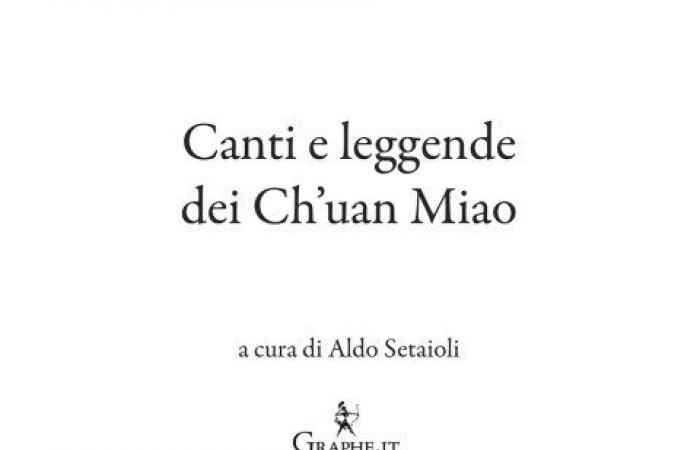
The fascinating tales and particular legends of a people without written literature: the Ch’uan Miao, one of the minorities recognized by the Chinese government, better known to the general public as the Hmong from the film “Gran Torino” by Clint Eastwood. Now a book by Aldo Setaioli, professor emeritus of Latin language and literature at the University of Perugia; it’s about Songs and legends of the Ch’uan Miao, pp.68, Edizioni Graphe.it, 2024.
The Ch’uan Miao is a little-known ethnic group, with a complex and extremely interesting history and folklore. The affinities with the neighboring Chinese people are set with just as many linguistic and anthropological differences in general, veiled by a legacy of ancient oppression suffered which has not lost (at least until the rise of Communism) a trace of resentment.
In the 1930s, Baptist missionary David Crockett Graham collected and translated into English the only system of conservation of mythological corpus of the Ch’uan Miao: the over 750 traditional songs handed down orally for centuries.
Today, with the present volume and thanks to the skilful translation and selection work carried out by Aldo Setaioli, this priceless heritage reaches us, and allows us to get to know a population that did not write books, did not build temples, but exactly like us she asked herself questions about the cosmos and man and gave herself answers that also find confirmation and meaning in the Western tradition.
From the introduction by Aldo Setaioli: “The Ch’uan Miao are an ethnic group that lives mainly in some areas of the Chinese provinces of Szechwan and Yunnan. Physically they resemble the Chinese, although they have a less pronounced Mongolian fold and are generally shorter in stature. Their name is composed of the term Ch’uan, which probably alludes to the fact that many of them live in Szechwan, and the term Miao (“children of the earth”), which is sometimes used without distinction for other ethnic minorities living in China . In their language they are called Hmong Bo. In ancient times the Miao were driven out of their territories by the expansion of the Chinese, until they were confined to the regions in which they still live, mixed with the much larger Chinese communities. Others were forced to emigrate to neighboring countries. The echo of these contrasts can still be clearly seen in the stories handed down in Miao folklore, where the affinity with the Chinese is recognised, but the resentment for the oppression exercised by the latter is also felt. The languages are different. That of the Miao, although it has affinities with Chinese (both languages are monosyllabic), has an even more complex system of tones. Different tones give a sound completely different meanings. The Miao live mainly, indeed almost exclusively, from agriculture, as can also be seen from the stories reported here. These are mostly songs, handed down orally. The Ch’uan Miao are in fact devoid of written literature. Storytellers have an important role, but even more so is that of the tuan kung, a true magician and shaman. He knows formulas to heal every disease, to banish demons (which are the cause) and performs all sorts of ceremonies. There is also another type of shaman (called mo) who celebrates funerals and opens the way to heaven for the dead, killing a rooster to guide them. The Miao have no temples or organized priesthood, but they do have a fairly elaborate religion. The supreme god is called Ntzï and lives above the sky, in a flat region where the souls of the ancestors dwell, who live in peace and abundance, without the need to dedicate themselves to agriculture. Under the earth there is another parallel world, where very small men live (it is talked about in one of our stories). There are also numerous demons, often cannibals, who are sometimes souls of dead people neglected by their descendants, or of animals or even lifeless beings. For the Miao all things, even those of pure matter and even immaterial ones (the sun, the moon, the stars, the mountains, the rivers, the stones, but also the echo, the thunder, the rainbow, etc. ), they are in fact living and animated beings.”
Carlo Franza





